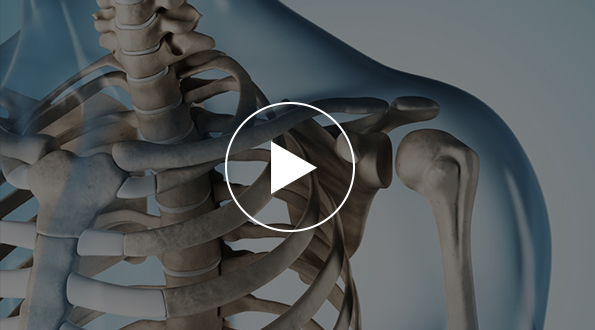
Rotator cuff disorders are one of the most common causes of shoulder pain. Injuries to the rotator cuff tendons are frequently seen in workers with physically demanding jobs, athletes, and physically active people. Some common examples include painters, welders, carpenters, swimmers and tennis players. It can be due to a one time traumatic injury or from repetitive use of the shoulder. Degenerative rotator cuff tears associated are common, are a major cause of shoulder pain, and can be aggravated by work or sports. Rotator cuff tears generally do not heal without treatment, and results in pain and disability. Many daily activities, like washing your hair or getting dressed, may become painful and difficult.
Symptoms
A patient’s History and Physical examination is the best way to initially evaluate any shoulder condition. It is important to make sure that the pain is actually coming from the shoulder and not from the neck or elbow. After discussing your symptoms and medical history, Dr. Li will examine your shoulder. He will check to see whether it is tender in any area or whether there is a deformity. To measure the range of motion of your shoulder, he will have you move your arm in several different directions. Your shoulder strength will also be evaluated.
Your doctor will check for other problems with your shoulder joint. He or she may also examine your neck to make sure that the pain is not coming from a “pinched nerve,” and to rule out other conditions, such as arthritis.
X-rays: Although plain x-rays do not show the rotator cuff tendons, they are helpful to look for calcifications, arthritis or bone spurs that can cause rotator cuff tears.
MSK Ultrasound: An ultrasound scan can be helpful for diagnosing rotator cuff problems. It allows the soft tissues of the shoulder to be seen, and can detect fluid and damage to tendons and muscles.
MRI: This is the most common imaging method to diagnose rotator cuff tears. It can be used to look for tears or inflammation of tissues and to help determine the size and character of the tear so proper treatment can be recommended.
Depending on several factors including patient activity, quality of the remaining rotator cuff tendon and size of the rotator cuff tear; the problem may respond well to therapy, injections and medication or it may require arthroscopic surgery.
Therapy– The purpose of Physical Therapy or Occupation Therapy is to improve symptoms and restore function. The approach will depend on whether you have a short-term (acute) problem or a long-standing (chronic) condition. The goal of the therapy program is to “functionally heal” the shoulder and could include:
- exercises to strengthen weakened muscles, improve their co-ordination and restore function
- advice on improving shoulder, neck and spine posture
- exercises to ease or prevent stiffness
- exercises to increase the range of joint movement
- applying adhesive tape to the skin to reduce the strain on the tissues and to help increase your awareness of the position of the shoulder and shoulder blade
- manual treatments to the soft tissues and joints.
Steroid Injections– A steroid injection given along with a local anesthetic can reduce pain very quickly. The injection reduce inflammation and allow you to move your shoulder more comfortably, though you shouldn’t use your shoulder for anything too strenuous the first two days after an injection. The pain relief should allow you to do your therapy exercises more easily. Repeated injections (more than two or three) aren’t usually recommended. If the problem keeps coming back, then other treatments should be considered.
Medications– NSAIDs (Non-steroidal anti-inflammatory drugs) are frequently used at the onset of rotator cuff injuries to reduce inflammation and control pain. They are available by prescription as well as over-the-counter. Some common over-the-counter NSAIDs include Ibuprofen (Motrin) and Naproxen (Aleve).
Arthroscopic Rotator Cuff Surgery– can be performed to repair torn tendons following a rotator cuff injury. Because it is minimally invasive, Arthroscopic Rotator Cuff Repair results in a much quicker and less painful recovery. Arthroscopic Rotator Cuff Repair has been performed successfully in an outpatient setting for many years to help people of all ages regain maximum use of their shoulder and resume normal routines and physical activities. Arthroscopic repair is superior to the traditional open repair and is successful even with very large tears, so there is no reason to settle for an open repair. Rotator Cuff surgery is performed on an outpatient basis which means going home the same day. A shoulder sling/orthosis will be used to protect your repair when you are in a public place, and may be used to protect your shoulder during sleep.
Post-Operative Physical/Occupational Therapy– is critical to a fast and strong recovery, so it is typically started just a few days after surgery. The typical length of post-operative therapy is 3 months but can vary depending on the size of the tear, condition of the rotator cuff, patient’s job requirements, and other factors. Initially the therapy will focus on restoring your passive range of motion, and after 4-6 weeks then active range of motion is started. After active range of motion is restored then the focus shifts to strengthening the rotator cuff muscles. It is very important to continue a home exercise program for 12-18 months because it takes that long to regain your strength.

